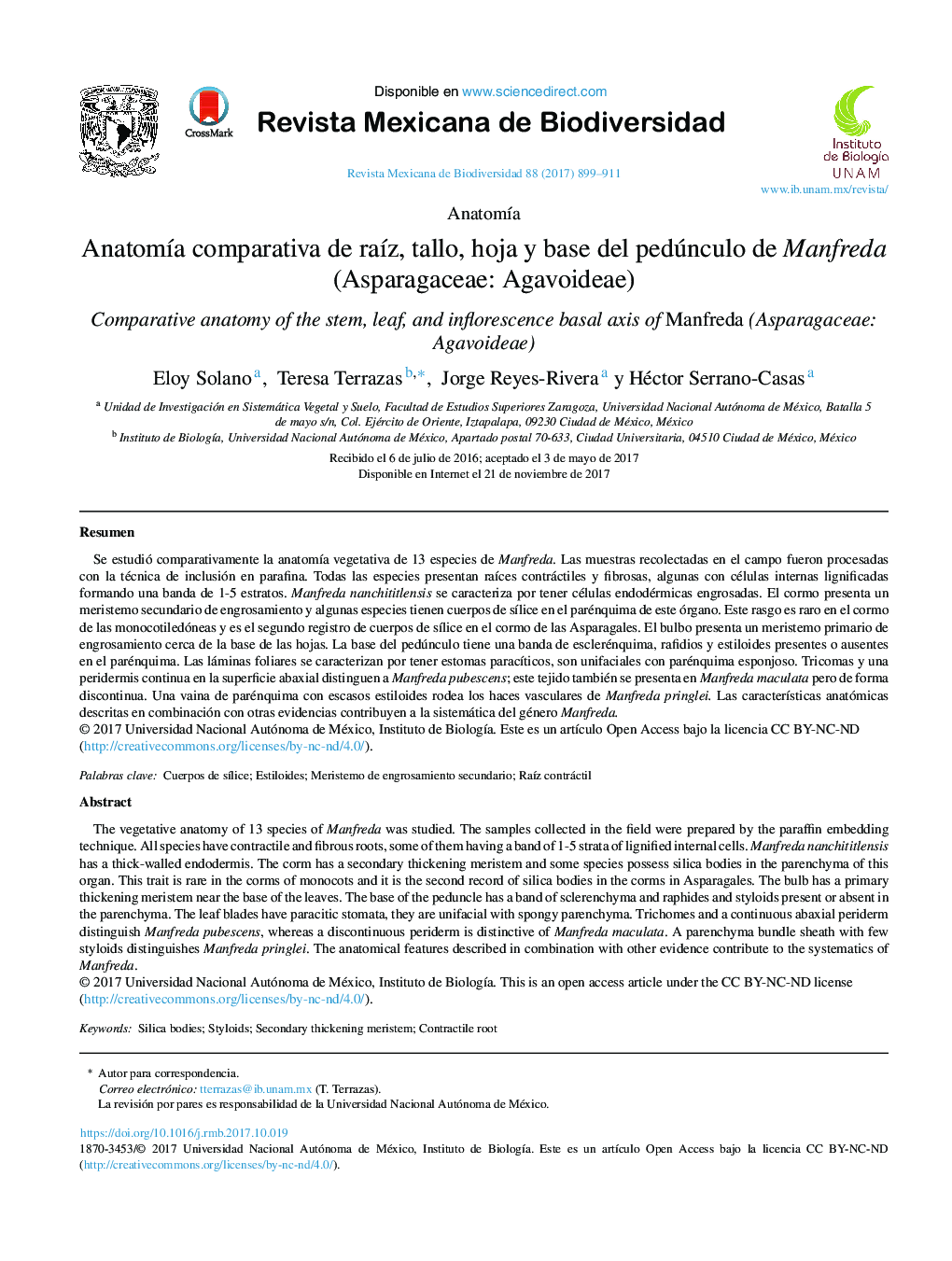| Article ID | Journal | Published Year | Pages | File Type |
|---|---|---|---|---|
| 8867002 | Revista Mexicana de Biodiversidad | 2017 | 13 Pages |
Abstract
The vegetative anatomy of 13 species of Manfreda was studied. The samples collected in the field were prepared by the paraffin embedding technique. All species have contractile and fibrous roots, some of them having a band of 1-5 strata of lignified internal cells. Manfreda nanchititlensis has a thick-walled endodermis. The corm has a secondary thickening meristem and some species possess silica bodies in the parenchyma of this organ. This trait is rare in the corms of monocots and it is the second record of silica bodies in the corms in Asparagales. The bulb has a primary thickening meristem near the base of the leaves. The base of the peduncle has a band of sclerenchyma and raphides and styloids present or absent in the parenchyma. The leaf blades have paracitic stomata, they are unifacial with spongy parenchyma. Trichomes and a continuous abaxial periderm distinguish Manfreda pubescens, whereas a discontinuous periderm is distinctive of Manfreda maculata. A parenchyma bundle sheath with few styloids distinguishes Manfreda pringlei. The anatomical features described in combination with other evidence contribute to the systematics of Manfreda.
Keywords
Related Topics
Life Sciences
Agricultural and Biological Sciences
Animal Science and Zoology
Authors
Eloy Solano, Teresa Terrazas, Jorge Reyes-Rivera, Héctor Serrano-Casas,
